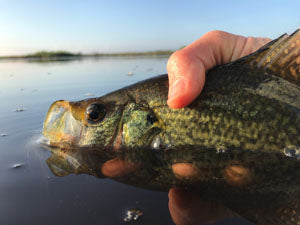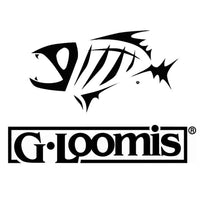Fly Fishing Through the Seasons
Evidenced by the number of people flocking to Florida as the northern days grow shorter, it’s no secret that our climate doesn’t follow the same rules as the majority of the country. Visitors from colder regions, and even many locals, may argue that Florida doesn’t really experience seasons. Those of us who spend much of our lives outside just nod our heads and smile – and look forward to the next change in season.
With our warmer climate, we experience seasons differently than in more northern latitudes. Our plants and wildlife, including fish, are often out of sync with the rest of the country. While in more temperate areas the year can be divided into four relatively clean and neat seasons, things are a little more complicated down here.

The seasons are officially marked by the Vernal and Autumnal Equinoxes and the Summer and Winter Solstices. The equinoxes occur when the sun is exactly above the equator, giving day and night equal lengths. Solstices occur when the sun is at its most northerly or southerly point at noon relative to the earth’s equator. This will coincide with the longest and shortest days of the year. Here are the season start dates for 2020:
March 20: Spring begins with the Vernal Equinox
June 20: Summer begins with the Summer Solstice
September 22: Autumn begins with the Autumnal Equinox
December 21: Winter begins with the Winter Solstice
Rather than start at the beginning of the calendar year, right in the middle of the cool season, I’ll begin with the change from summer to fall. This is the time of year that arguably sees the most flux in population. Visitors and part time residents from the north, both people and birds, arrive in great numbers, just as many of the fish that spend their summers in Florida begin their southern migration to escape cooling waters.
Fall
Fall is more of a progression from hot, humid days to cooler, drier weather, than an easily discernible change. Tropical weather, with regular afternoon thunderstorms and a chance of hurricanes or tropical storms, often lasts into October. It starts to feel like fall, to us and the fish, when we finally get a cold front that brings the daytime highs down and cools the evenings to the point where you might actually consider pulling on a light jacket.
The first few cold fronts are just welcome diversions from summer, cooling the weather down little by little. A major cold front, usually in late October or early November, will push along the seasonal change. By this time daytime temperatures are regularly topping out in the 70’s and days are noticeably shorter.
Fall – Saltwater Fishing
 Our shallow water estuaries are nurseries for all kinds of marine animals, including various species of baitfish. These fish, of which mullet is probably the most recognized, have spent the warm months fattening up in the relative security of backcountry areas, enjoying ample food and protection from predators. As the weather starts to change and daylight hours lessen, they will gather together in huge schools near inlets for their migration south.
Our shallow water estuaries are nurseries for all kinds of marine animals, including various species of baitfish. These fish, of which mullet is probably the most recognized, have spent the warm months fattening up in the relative security of backcountry areas, enjoying ample food and protection from predators. As the weather starts to change and daylight hours lessen, they will gather together in huge schools near inlets for their migration south.
The schools will build until the first cold front of the fall, at which point they will pour out into the ocean in droves and begin the southward migration. The open ocean is anything but safe for a small fish. This abundance of readily available food brings predators from near and far. At every point along the way they will be harassed by tarpon, snook, redfish, jacks, mackerel, bluefish, shark, cobia and any other nearby predator in search of an easy meal. If the weather is good, this is the perfect time to head out of the inlet to catch some truly large fish on fly.
When the bait pods, and, more importantly, the accompanying predators, are close enough to the shore, the beach fishing can be excellent. A great way to fish the bait run from shore is to drive to beach access points and look for birds. A flock of birds in the sky almost always indicates a bait pod below. If the bait pod is within casting distance and you see fish crashing bait from underneath, you’ve found what you are looking for. Try to get a look at the baitfish and throw a fly that is a reasonable match.
Depending on the predators present, you may be able to get away with an 8wt rod, but a 10wt, rigged with a fluorocarbon bite tippet of 30lb to 60lb or some tie-able wire, is a better setup. A standard floating line can work but an intermediate line will help keep your line below the waves and give your fly more time in front of fish.
The baitfish run starts towards the middle of September and usually continues through October. If we have a strong run and a smooth transition into winter, the run may last all the way to Thanksgiving. Less stable weather, with a strong early cold front or a hurricane, can shorten the run dramatically. This is all the more reason to be prepared and make a quick trip over to the beach as soon as you hear the action is good.
 Moving back inshore, Redfish feed very well as the weather cools. They seem to know that the bait is on its way out and do their best to take advantage of the buffet while it is still available. You can often find redfish in the fall hunting edges in the Mosquito Lagoon and Indian River. With the weather cooling off, fish will be comfortable on the flats all day, often providing some of the best fishing of the year. A small baitfish pattern or shrimp fly dropped a couple feet in front of them should do the trick.
Moving back inshore, Redfish feed very well as the weather cools. They seem to know that the bait is on its way out and do their best to take advantage of the buffet while it is still available. You can often find redfish in the fall hunting edges in the Mosquito Lagoon and Indian River. With the weather cooling off, fish will be comfortable on the flats all day, often providing some of the best fishing of the year. A small baitfish pattern or shrimp fly dropped a couple feet in front of them should do the trick.
You are likely to see large trout on the flats this time of year, along with the redfish. They can be sight fished, if you see them soon enough. A baitfish pattern or midwater shrimp imitation is often effective. If you know there are big trout in the area, don’t wait until you see them. Lay some long casts out over sand holes and along drop-offs.
As the season progresses and water temperatures drop, redfish will gather together in large schools. Fishing is still excellent but instead of singles and doubles hunting flats and edges, it is more likely that you will find larger groups of fish in slightly deeper water. They will still feed on baitfish, when they can get them, but will concentrate more on crabs and shrimp. Fishing is usually slow just before and during a cold front, but picks back up a day or so after.
Cold water brings black drum onto the flats in increasing numbers. Favorite flies are fleeing crabs and other bottom-hugging crustacean flies. They usually won’t travel far to eat, and have trouble finding flies in the grass and mud where they often feed. Accuracy and persistence are a must.  The difficulty in getting them to eat is tempered by the fact that they are not easily spooked and you will likely get multiple shots at the same fish.
The difficulty in getting them to eat is tempered by the fact that they are not easily spooked and you will likely get multiple shots at the same fish.
Snook and tarpon are more difficult to catch as the weather cools. Some resident tarpon stick around through the winter. Most, however, head out of the inlets and follow the bait south to more comfortable water. Some snook and tarpon, along with other more tropical species, will move with manatees into warm water sanctuaries, where they will stay until the weather warms. These include power plant discharges, as well as the many spring around the state.
Some of these springs are far inshore. Blue Springs, north of Orlando, is a good place to see snook and tarpon mixed in with manatee, alligators, tilapia, and largemouth bass during cold weather. It’s worth the visit, especially on a cold day in the winter. Keep in mind that Blue Springs is over 125 miles upstream from the mouth of the St. Johns.
Sometime around Thanksgiving, flounder begin their annual migration out of the inlets to deep water structure where they spawn and spend the winter. If you are fishing near inlets or tidal creeks it is worth spending some time casting at creek mouths and across shallow bars, especially around oysters. A slider or bottom bouncing fly, like a Clouser minnow, would be a good choice. They will come up to eat a fly but you do have to be close to the bottom to catch them with any regularity.
Snook are not as widespread or as active during cooler weather, but they will eat well on warm days. Focus on structure around moving water as well as areas with warmer water, including shallows warmed by the sun.
Fall – Freshwater Fishing
 Early fall freshwater fishing is some of the best of the year. Bass will take advantage of shoals of schooling baitfish, creating excellent sight fishing possibilities. A smaller (1 ½”) baitfish pattern usually works when the bass are chasing schools of bait. If you don’t see any topwater feeding frenzies, try poppers in the morning and evening, and baitfish patterns and other bass flies around structure during the middle of the day.
Early fall freshwater fishing is some of the best of the year. Bass will take advantage of shoals of schooling baitfish, creating excellent sight fishing possibilities. A smaller (1 ½”) baitfish pattern usually works when the bass are chasing schools of bait. If you don’t see any topwater feeding frenzies, try poppers in the morning and evening, and baitfish patterns and other bass flies around structure during the middle of the day.
Panfish will often happily eat small poppers throughout the day. If topwater isn’t working, try a dragonfly/damselfly nymph or a small baitfish. Because I have caught some of my larger bass on smaller flies while fishing primarily for panfish, I use tippet of at least 10# test when targeting panfish.
Bass and panfish action slows down as the weather cools, but can still be very good. As long as schools of baitfish are still present, bass will actively feed on them. There may be an early morning bite but fishing is usually better once the sun is up and warming the water. Panfish and bass will both eat well on warmer days, especially if you fish right up against structure. If you are having trouble getting strikes, small streamers and nymphs fished slowly will often draw strikes from sluggish fish.
The cooler weather moves schools of crappie into their winter spawning areas, where they can sometimes be caught in large numbers. If you catch one, chances are there are more waiting to eat your fly. Many of the larger lakes in the area hold good populations of crappie. The St. John’s river system is also a great place to catch them. If you enjoy fresh fish, bring a cooler!
 One of the highlights of cool weather fishing in central Florida is the annual migration of American and Hickory shad up the St. John’s River. There are usually a few fish caught as early as late November or early December, with the numbers increasing as the weather cools. By the middle of January, the run is in full swing, with fish spread through the middle portion of the river, from Lake Monroe south. Shad hold in moving water, typically in deeper pools. Swinging a shad dart or baitfish imitation, often weighted, through holding water is a great way to find out if they are in the area. When they are there, the fishing can be amazing.
One of the highlights of cool weather fishing in central Florida is the annual migration of American and Hickory shad up the St. John’s River. There are usually a few fish caught as early as late November or early December, with the numbers increasing as the weather cools. By the middle of January, the run is in full swing, with fish spread through the middle portion of the river, from Lake Monroe south. Shad hold in moving water, typically in deeper pools. Swinging a shad dart or baitfish imitation, often weighted, through holding water is a great way to find out if they are in the area. When they are there, the fishing can be amazing.
While the shad are the main focus of most fly anglers on the St. Johns, there are plenty of other species to catch. The river is full of crappie, largemouth bass, redbreasted sunfish and bluegill. Hybrid striped bass (Sunshine Bass) are caught on a regular basis as well. They are hard to target but a lot of fun to catch when it happens. All of these species will hit a shad fly. Catches of catfish, bowfin and gar are also very possible. These fish may not be quite as glamorous as some of the others mentioned but they eat flies and fight well. Just don’t try lipping them!
If you fish the St. Johns, be aware that many of the areas we fish for shad are also favored by duck hunters. Check the FWC website for duck hunting information. If you fish on days when duck hunting is permitted, it is a good idea to get out a little late to allow the hunters to shoot their ducks and get off the water. Also, be aware that the river is frequented by airboats. Make sure you are visible and show them respect and they should return the favor.
Winter
 By the time shad season is in full swing, fall has transitioned into winter. January begins with some of the coldest weather of the year. We expect some frosty mornings in January and February, and possibly a hard freeze or two. Every few years we have a colder than average winter that sets back some of the more tropical species. Such weather arrived in 2010 and 2014, resulting in fish kills in both fresh and saltwater. The cold was too much for many of the snook living in the northern Indian River, the Mosquito Lagoon and water to the north. Inland, the dead tilapia, invasive catfish and other species on the shores of the St. Johns River and other central Florida bodies of water, fed flocks of scavenging birds for days on end.
By the time shad season is in full swing, fall has transitioned into winter. January begins with some of the coldest weather of the year. We expect some frosty mornings in January and February, and possibly a hard freeze or two. Every few years we have a colder than average winter that sets back some of the more tropical species. Such weather arrived in 2010 and 2014, resulting in fish kills in both fresh and saltwater. The cold was too much for many of the snook living in the northern Indian River, the Mosquito Lagoon and water to the north. Inland, the dead tilapia, invasive catfish and other species on the shores of the St. Johns River and other central Florida bodies of water, fed flocks of scavenging birds for days on end.
Some fish, either more tolerant individuals or those that find a sanctuary a few degrees warmer, survive to rebuild the population. It may take a few years, but they will be back. Currently, in the late fall of 2019, the central Florida East coast snook population is healthy and growing. While we appreciate the cleansing effect of cold weather on freshwater invasives, as well as on the mosquito population, we always hope for a mild winter for the sake of our snook.
Even in the middle of “winter” we have plenty of warm days where we are fishing in a t-shirt. Winter is made up more of a series of cold fronts and dry weather than by a lasting cold. In between cold fronts, the weather is usually pretty stable with lots of sun.
Water holds less material in suspension as it cools, so cold water mean “clear” water. Sometimes this is crystal clear. Other times it’s just a little more clear than summer. Regardless, the higher clarity in winter months does improve saltwater sight fishing.
Both in freshwater and salt, fishing is typically better a little later in the day when the water has had a chance to warm up. Look for sunny edges and shallows with dark colored bottoms that will soak up more of the sun’s energy. If you find water that is a couple degrees warmer than surrounding areas, you may also find a few fish. It’s a good idea to use smaller patterns, both in fresh and saltwater, than you likely use during the warmer months. And, especially on cold days, you may have to fish them more slowly than usual.
Winter – Saltwater Fishing
 There are exceptions. Some of the best black drum fishing I’ve experienced has been the day after the arrival of a strong cold front, when temperatures start out below freezing. Larger redfish, of 35” or more, are also less affected by the colder water and can sometimes be found hunting the flats on chilly mornings for cold-stunned baitfish.
There are exceptions. Some of the best black drum fishing I’ve experienced has been the day after the arrival of a strong cold front, when temperatures start out below freezing. Larger redfish, of 35” or more, are also less affected by the colder water and can sometimes be found hunting the flats on chilly mornings for cold-stunned baitfish.
There are still a few juvenile resident tarpon around. If the day is warm, you really want to catch a tarpon in January or February, and you know where to go, it can be done. Snook can also be caught on warm winter days. Especially if you find an area with warmer water. Shallow sunlit coves and drainages coming from backcountry areas on afternoon falling tide are good places to look.
Like the many baitfish that spend a portion of the year eating and growing in the Mosquito Lagoon and Indian River, several species of shrimp time in the Lagoon system completing their development. When the time is right, at night during a strong outgoing tide (a few days on either side of the full or new moon), these now mature shrimp ride the tide towards the inlets and out to the open ocean, where they will spawn.
Dock light fishing in tidal areas is productive all year, but can be especially good during a shrimp run. Gamefish enjoy fresh shrimp as much as we do, and use the opportunity to gorge themselves. Anchor upstream from dock lights, within easy casting distance, on an outgoing tide. Cast to just above the upstream edge of the light and let your fly swing through. Sinking shrimp imitations, topwater gurglers and baitfish patterns will get eats. Make sure you bring along some 30lb fluorocarbon in case there are snook, bluefish or other rough-mouthed or toothed fish around.
Winter – Freshwater Fishing
 Assuming a healthy spawning run and reasonable water levels in the St. Johns River, shad fishing will be excellent all winter and into spring. Fishing is more comfortable on warmer, sunny days but, if you have the right gear, shad fishing in inclement weather can be excellent. One of my best ever shad fishing days started out in the high 30’s or low 40’s, with a steady drizzle that never let up. The fish were high in the water and feeding all day long. Waders, good rain jackets, warm gloves, and regular coffee stops kept us comfortable.
Assuming a healthy spawning run and reasonable water levels in the St. Johns River, shad fishing will be excellent all winter and into spring. Fishing is more comfortable on warmer, sunny days but, if you have the right gear, shad fishing in inclement weather can be excellent. One of my best ever shad fishing days started out in the high 30’s or low 40’s, with a steady drizzle that never let up. The fish were high in the water and feeding all day long. Waders, good rain jackets, warm gloves, and regular coffee stops kept us comfortable.
Their arrival time depending largely on northern cold fronts, the shad are joined on the St. Johns by flocks of white pelicans arriving from the northern US and Canada. One of the largest North American birds, with wingspans up to 9’, they are an impressive sight when gathered together on a bar or point at the edge of the river.
Crappie fishing is excellent during the colder months, when they move up into the shallows to spawn. Those who know where to find them can consistently catch them on small baitfish patterns. A sink tip line can be helpful if they are in deeper water. They will often be mixed in with shad on the St. John’s, eating mosquitofish and shrimp off the top and along deep edges.
Bass and panfish move more slowly when the water is truly cold. Sinking flies fished with patience are your best bet on colder days, especially under overcast skies. On warmer days, look for surface action on sunny edges. It’s always wise to be on the lookout for bass eating baitfish off the top and in the shallows.
At some point during the winter, it starts to feel a little more like “spring.” Fruit trees begin to flower and, especially on warm days, fish increase their activity. Bass actually begin to spawn in early January in some of the area waters. A late cold front will abruptly bring back winter, setting the progression back a few weeks. We have usually seen our last frost in the Orlando area by the middle of February, though it can come as late as early March, especially in rural areas.
Spring
With lengthening days and increasing temperatures, good things happen in central Florida waters. Fish that have spent the winter in deeper areas with more stable temperatures move back to the shallows where they are more accessible to those of us throwing a fly rod. Forage species are growing and reproducing, and baitfish are becoming more prevalent. To top it off, temperatures are comfortable for us throughout the day.
Spring – Saltwater Fishing
 As the days get longer and water warms, redfish will leave their wintertime schools and spread out into the backcountry and across flats. Schools are fun, but we much prefer to sight fish singles and small groups of redfish on the flats. Following suit, snook and resident tarpon move out of their deep winter haunts and spread out in the backcountry. They will chase a fly further and are more likely to eat as the water temperature increases.
As the days get longer and water warms, redfish will leave their wintertime schools and spread out into the backcountry and across flats. Schools are fun, but we much prefer to sight fish singles and small groups of redfish on the flats. Following suit, snook and resident tarpon move out of their deep winter haunts and spread out in the backcountry. They will chase a fly further and are more likely to eat as the water temperature increases.
It doesn’t take much of a rise in water temperature to convince the gamefish that spend winter in the Florida Keys and beyond to start their move north. A number of species, including cobia, kingfish and Spanish mackerel, take part in this parade to the north. The undisputed favorite among fly anglers is tarpon, the Silver King.
“Tarpon Season” begins early in the year and far south of us. During particularly warm winter days, tarpon in backcountry creeks and basins in south Florida will move to shallow bays and rise to the surface, enjoying the warm surface water. Sometimes they flag their location with the tip of a fin breaking the surface. These “laid up” fish will eat a gently presented fly in their line of sight.
The beginning of the annual migration is signaled by the movement of large numbers of tarpon progressively to the north and inshore. This migration isn’t a steady stream of fish. Rather “pushes” of fish will arrive in locations up and down the coast, sometimes sticking around for a while, and at other times continuing on after a short respite. Massive offshore schools are occasionally reported, by private pilots and offshore captains, covering literally acres of water. Dedicated tarpon anglers will follow the migration north, saving up both money and vacation days through the cooler month so they can disappear for weeks at a time when the tarpon start to move.
 Cobia arrive well before the tarpon show up in force. When the nearshore water in the Atlantic reaches between 68 and 72 degrees, those with big enough boats head out of Port Canaveral and Ponce Inlet to look for cobia. While free swimming cobia are around, many are hitchhiking on the backs of migrating manta rays. A well-placed cast on the back of a ray will often result in a hookup with a cobia. Just make sure you don’t lead the fish too much our you may end up losing tackle to a manta ray.
Cobia arrive well before the tarpon show up in force. When the nearshore water in the Atlantic reaches between 68 and 72 degrees, those with big enough boats head out of Port Canaveral and Ponce Inlet to look for cobia. While free swimming cobia are around, many are hitchhiking on the backs of migrating manta rays. A well-placed cast on the back of a ray will often result in a hookup with a cobia. Just make sure you don’t lead the fish too much our you may end up losing tackle to a manta ray.
While offshore, be on the lookout for schools of large jack crevalle, tripletail on buoys and floating debris, and dolphin (dorado) around debris and weed lines, and free swimming sharks. All can be caught on the right fly. While a tripletail and peanut dolphin can be subdued with an 8 weight setup, 10wt through 12wt rods with fluorocarbon bite tippet of at least 40 pounds, or wire, in the case of sharks, are more appropriate for the others.
Spring– Freshwater Fishing
 By the time spring has officially begun, most bass in the area will have already spawned. They will be hungry and looking for food. Daytime temperatures are comfortable, for both us and the fish, and fishing will be good throughout the day.
By the time spring has officially begun, most bass in the area will have already spawned. They will be hungry and looking for food. Daytime temperatures are comfortable, for both us and the fish, and fishing will be good throughout the day.
Warming weather brings largemouth bass and a host of panfish to the shallows to gorge on the abundant insects and amphibians. While they also eat subsurface flies very well, it’s hard to beat a topwater strike from a voracious bass or redbreasted sunfish. On warmer days, get out early and target shady areas along edges, deeper structure, and heavy cover. If the fish won’t come up to eat, try a sinking baitfish pattern or dragonfly or damselfly larvae.
While bass spawn earlier in the year, the various species of panfish spawn from late winter through summer. If you see a pattern of light colored shallow depressions in coves or along shallow edges, you have most likely either found panfish beds or tilapia beds. Tilapia beds are much larger. If there are fish on the bed and your fish identification skills are reasonably good you’ll be able to quickly tell the difference.
Panfish will aggressively attack a small fly stripped near their bed, and will often come up to take a surface offering as well. Tilapia are more difficult to catch. The most consistent tactic is to drop a large fly in their bed and wait for them to move it out of the way.
Summer
 Some years we enjoy a gradual transition from spring to summer, with gradually warming days and still cool nights. Other years, summer seems to arrive overnight. Either way, we know when it’s here. The summer rains start, the humidity rises, and nighttime temperature drops no more than a few degrees. While the weather may not be too comfortable for us, most of our local gamefish are perfectly happy.
Some years we enjoy a gradual transition from spring to summer, with gradually warming days and still cool nights. Other years, summer seems to arrive overnight. Either way, we know when it’s here. The summer rains start, the humidity rises, and nighttime temperature drops no more than a few degrees. While the weather may not be too comfortable for us, most of our local gamefish are perfectly happy.
There is plenty of forage around and plenty of fish are looking for food. Much less welcome than the hungry gamefish are the love bugs that appear in giant mating swarms each May, right around the time the tarpon show up, and again in September. Contrary to rumor, they naturally migrated north from Central America, entering the U.S. around 1920 and Florida in the 1940’s. They are harmless and don’t impact the fishing, except to add to your end of the day cleanup time when you run through a swarm on the way to or from the water.
As the hot weather continues, energy builds up in the tropics and hurricanes become more of a concern. In the absence of hurricanes, weather is fairly predictable, with warm mornings turning into hot days with a high likelihood of thunderstorms. What is not predictable is the precise timing and location of these storms. Afternoon thunderstorms often build quickly and can turn a calm afternoon into wind driven, lightning streaked chaos in a matter of minutes. A good real-time radar app on your smartphone can help keep you out of trouble. Just don’t let the technology override your common sense. If it looks like a storm is building towards you, regardless of what the radar shows, it’s time to leave.
These thunderstorms cool things down nicely but, if early enough in the day, make for some very steamy afternoons. Some of the best fishing on the flats comes right after a thunderstorm has blown through the area. Fish seem to enjoy the temporary cloud cover and cool rain and often move up on the flats to feed. If you are there to meet them, especially if there is a post-storm calm, you will get shots at plenty of fish.
While we never hope for a hurricane, they do have some benefits. They bring much needed rain to the area, refilling the aquifer and adding water to the many swamps, streams and lakes. A late summer hurricane or tropical storm will often flood the St. Johns River marsh, setting the river up for optimal shad spawning conditions in the winter.
An additional benefit of both hurricanes and tropical storms is the often excellent fishing as the storm approaches and the barometric pressure drops. The fish know something is coming and often are feeding heavily. If you are able to get out a day or two before a hurricane or tropical storm arrives, in the pre-storm calm, you may very well be rewarded with some incredible fishing.
Occasionally during the summer, a strong offshore wind will blow warmer water offshore. This creates a cold water upwelling, as much cooler water from deeper down flows up to fill the vacant space. As an upwelling will completely shut down nearshore and offshore fishing out to the edge of the cold water, it’s a good idea to check water temperature online (look at fishing piers and nearshore buoys) before heading out of an inlet. If tarpon and other nearshore fish are inside inlets and estuaries when an upwelling happens, they will likely stay there, providing fishing opportunities until the ocean water warms up.
Summer – Saltwater Fishing
 Summer tarpon don’t fully move into our area until the weather is hot. This usually coincides with the appearance of Sulphur butterflies in coastal areas. If you walk outside in the morning, before sunup, and start to sweat, tarpon season is here.
Summer tarpon don’t fully move into our area until the weather is hot. This usually coincides with the appearance of Sulphur butterflies in coastal areas. If you walk outside in the morning, before sunup, and start to sweat, tarpon season is here.
Our local tarpon are usually found in nearshore water, around schools of baitfish, or inshore, in deep cuts and channels. The nearshore (beach) fish are most often caught on patterns the mimic the baitfish they are eating. It often helps to throw a sinking line to get your fly down to where the majority of the fish are feeding.
Inshore, tarpon feed on various shrimp, crabs and baitfish. If they are in the area, you will likely see them rolling in deeper channels in the early morning calm. They spend little time near the surface and are most often caught by swinging flies with the current in areas where they are rolling.
While it is possible to fish for adult tarpon locally, those who fish them regularly usually take the time to drive a little further south, or even over to the gulf coast. The adult tarpon fishery is much more consistent just a little south of us.
Juvenile tarpon, on the other hand, are perfectly happy in the inshore waters of the Banana River, Indian River and portions of the Mosquito Lagoon. In the right conditions, which often occur on calm, warm early mornings, they will throw themselves at topwater gurglers and slow sinking baitfish patterns with reckless abandon. These fish will eat! Hooking them is often another matter. Small gurglers are effective in low light conditions. When the sun is up, or if the fish just won’t eat on top, small (1 ½” long) light colored baitfish patterns will often elicit a strike.
Especially deep in the Mosquito Lagoon and Indian River, in areas with little tidal flow, the thin sheet of water covering the flats can heat up quickly in the summer. Redfish and trout that happily feed in the morning will move off the flats and into cooler, more oxygen rich water as the sun moves up in the sky and raises the water temperature. Get out on the water early and plan to hunt edges or head home when the flats heat up. Arriving early has the added benefit of getting you on the water well before the eastern sea breeze picks up and storms start to build.
You should work hard to avoid being on the water during an afternoon thunderstorm but it can be well worth hitting the water just after one has passed. Air and water temperatures will be cooler, conditions are often slick, and the fish may very well move back up onto the flats. Some of the best redfishing I have experienced has been on the Mosquito Lagoon from just after a thunderstorm to dark. When you hit it just right the water is like a mirror, there are tails everywhere, and the fish are eating.
Portions of both the Mosquito Lagoon and the Indian River are ringed by canals and back ponds, which are connected to the main body of water by culverts. The back ponds are filled with shrimp, crabs, and baitfish of all shapes and sizes. These culverts can be opened and closed to control the inside water level. It pays to search these out and remember where they are. Some are only accessible by boat, while other can be reached by car, via dike roads running along the water, or on foot.
 At least a few of these culverts are usually open during the summer rainy season. A short afternoon shower won’t generate much flow but a tropical storm or hurricane, or several days of strong thunderstorms, will fill up the inside, turning open culverts into a flowing river carrying a steady stream of food to the hungry predators waiting on the outside. A baitfish or shrimp imitation cast into the current will quite likely be eaten by something. Depending on where and when, you may hook into a snook, small tarpon, redfish, trout or ladyfish. Tie on a bite tippet of 25-30lb fluorocarbon if you think there may be snook or tarpon around.
At least a few of these culverts are usually open during the summer rainy season. A short afternoon shower won’t generate much flow but a tropical storm or hurricane, or several days of strong thunderstorms, will fill up the inside, turning open culverts into a flowing river carrying a steady stream of food to the hungry predators waiting on the outside. A baitfish or shrimp imitation cast into the current will quite likely be eaten by something. Depending on where and when, you may hook into a snook, small tarpon, redfish, trout or ladyfish. Tie on a bite tippet of 25-30lb fluorocarbon if you think there may be snook or tarpon around.
While redfish typically spawn offshore, we have a distinct inshore-spawning population in the Mosquito Lagoon and northern Indian River. If you are out fishing in late summer or early fall and find a large group of mature redfish in a few feet of water, you have likely found a spawning aggregation. Please treat them with respect. If you choose to fish for them, make sure your tackle is heavy enough for the task and fight them hard so you can land them quickly. Keep them in the water as much as possible and don’t ever lift them from their jaw, either to weigh them or for any other reason. Doing so will likely damage their jaw and, in heavy fish, can also cause internal damage. After you’ve taken a few quick photos, consider giving the breeders a rest and looking for fish in other areas.
Hot weather brings snook out of their backcountry haunts, into passes and inlets and out onto the beaches. Spawning, which centers on the full and new moon when tides are strongest, takes place in inlets and passes. For this reason, beaches near inlets and passes often offer excellent snook fishing. Snook are often seen swimming along the beach in small groups with a number of small males near a much larger female.
The best beach fishing is on low energy west coast beaches, from Tampa south. Snook will often be swimming the trough right against the beach and will take a well presented baitfish or shrimp pattern. The Crystal Schminnow, developed by Norm Ziegler of Sanibel, is the quintessential beach snook fly though plenty of other patterns work equally well. All you need to be successful is a pair of polarized glasses, a 7 or 8wt fly rod, a floating line, a leader tipped with a section of 30# fluorocarbon and a small (2 to 2 ½” long) shrimp or baitfish fly. Ideal sight fishing conditions are high sun with a light offshore breeze to knock the waves down.
East coast beaches up to Cape Canaveral and slightly beyond also hold snook but the fishing is different. These are high energy beaches with lots of wave action. The fish are there but are difficult to see. Catching them often involves a lot of blind casting with flies sized to match the natural forage. A floating line can work but an intermediate will get down below the waves and will be easier to fish.
 While fishing east coast beaches in the summer you are likely to find near shore bait pods, sometimes right up against the beach, being worked by hungry predators. These predators could be a wide variety of species, including snook, tarpon, jacks, Spanish mackerel and sharks. An 8wt with some fluorocarbon or wire will work fine for the smaller species but be ready with a 10wt or heavier if you want to have any chance of landing the larger species.
While fishing east coast beaches in the summer you are likely to find near shore bait pods, sometimes right up against the beach, being worked by hungry predators. These predators could be a wide variety of species, including snook, tarpon, jacks, Spanish mackerel and sharks. An 8wt with some fluorocarbon or wire will work fine for the smaller species but be ready with a 10wt or heavier if you want to have any chance of landing the larger species.
Many of the bait pods you will see will be past the breakers, out of range of even the best fly casters. A small seaworthy boat will solve this problem and get you into some great nearshore action. Rods in the 8 to 12 weight range will all be useful. If you plan to do this type of fishing often, rig at least one 10 to 12wt rod with a sinking line to get down into or below the bait pods.
Summer – Freshwater Fishing
 Bass and panfish are very active through the summer. The best times to fish will be low light periods in the morning and evening and after rains. They can be caught throughout the day, but will often move to deeper water or into heavy structure as the sun moves higher in the sky, moving back into the shallows in the evening.
Bass and panfish are very active through the summer. The best times to fish will be low light periods in the morning and evening and after rains. They can be caught throughout the day, but will often move to deeper water or into heavy structure as the sun moves higher in the sky, moving back into the shallows in the evening.
A wide variety of both floating and sinking flies will work. If you want to catch numbers of fish and don’t care what, a small popper (#4 or #6) on a 5wt rod will catch plenty of panfish and bass. If topwater isn’t working, try a small baitfish pattern or a damselfly or dragonfly nymph cast near structure. Nymphs should be stripped slowly and steadily. Vary the retrieve on the baitfish until you find what works.
If you are after large bass, go with a 7wt or 8wt rod and a larger fly. Large poppers and divers are great choices for low light. Once the sun is up, a sinking fly is a better option. Try baitfish patterns that imitate shiners or juvenile sunfish or bass. Large, sinking attractor bass patterns are also effective. Most of our lakes have a lot of vegetation below the surface. Even though they work well, the faster sinking patterns, intended to fish off of the bottom, may not be worth the trouble.
As daylight hours shorten, nighttime temperatures come down, afternoon thunderstorms are less frequent and the diminishing energy in the environment decreases the likelihood of hurricanes. Cold fronts to the north bring flocks of migrating birds and cold north winds. Before long we’ll be back to the fall bait run, schooled up redfish, bass eating baitfish off the top, and the beginning of the Saint Johns shad run.














